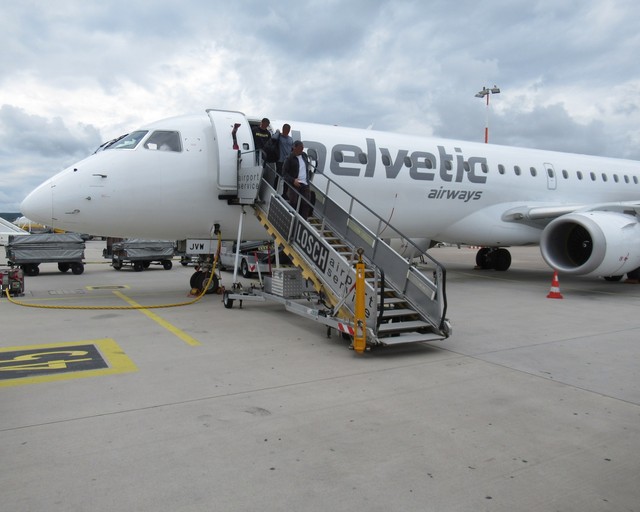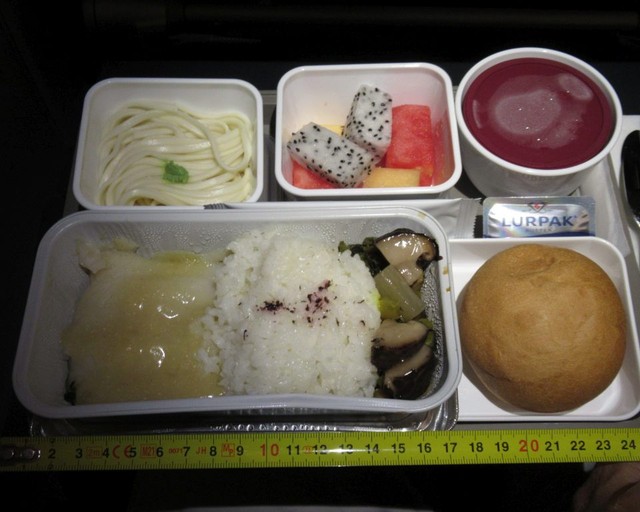Marathon in the Chinese Far-West, Book 4
Taipei – Beijing (A333 - Air China) The Great Wall from the sky in French here in English there
Beijing – Urumqi (B752 - China Southern) Beijing by night in French here in English there
Urumqi – Kashgar (E190 - China Southern) Invalid boarding pass in French here in English there
Hotan – Urumqi (B738 - Air China) Crossing the Taklamakan in French there YOU ARE HERE
Urumqi – Dunhuang (E190 - China Southern) Winglet story in the desert in French ) here in English there
Dunhuang – Urumqi (E190 - China Southern) Two days after the storm in French there in English there
Urumqi – Shanghai (A320 - Juneyao Airlines) Single aisle across China in French here in English there
Shanghai – Taipei (A343 - Air China) 675 km in a 343 in French there in English there
Hotan (Hetian, in Mandarin) is very large oasis in the south of the Taklamakan desert, which was feared for its size and lack of water sources. Kashgar – Hotan by way of the road which runs from oasis to oasis provides an idea of what the Silk Road was, at the time when it was going around this desert either north or south, since going through is was unrealistic. You have to be somewhat mad to take this road by bicycle, and yet I did see a cyclist.
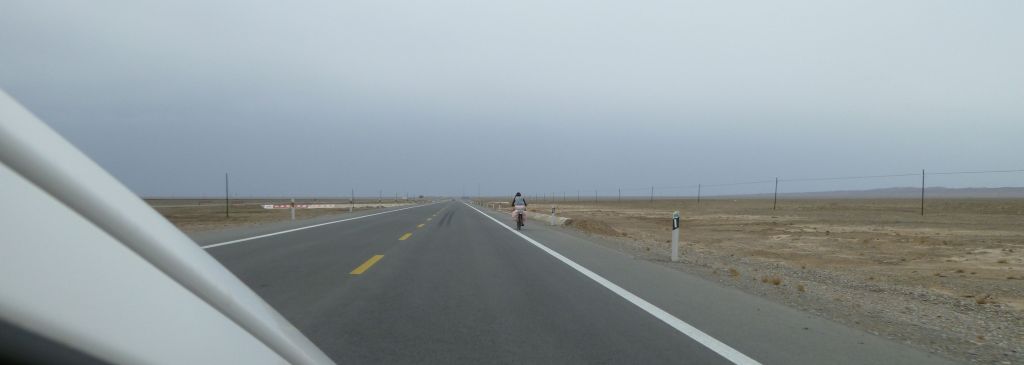
Would you believe it? The speed on this road is limited to 80 Km/h, and it is spread with radars. But in such a flat desert, they cannot be hidden, even less so that all were referenced in the GPS of our driver.

Why go to Hotan ? not only to see the ruins of the city of Melikawat, in the desert close to the oasis.

… where the only animal life seems to be these lizards which are well camouflaged on the bare ground

… except when they rest on a dark stone

Hotan's main attraction is its Sunday market, the largest and most authentic in Xinjiang. There are no tourists there, very few Han (the nationality of 94% of the Chinese citizens): this is not really China, but already Central Asia, made up of light colored and non slanted eyes, of veiled women, of donkeys and camels.

Do you want meat? The Uyghurs have a unique way of advertising for their wares (there was unmistakable camel meat ten meters away).

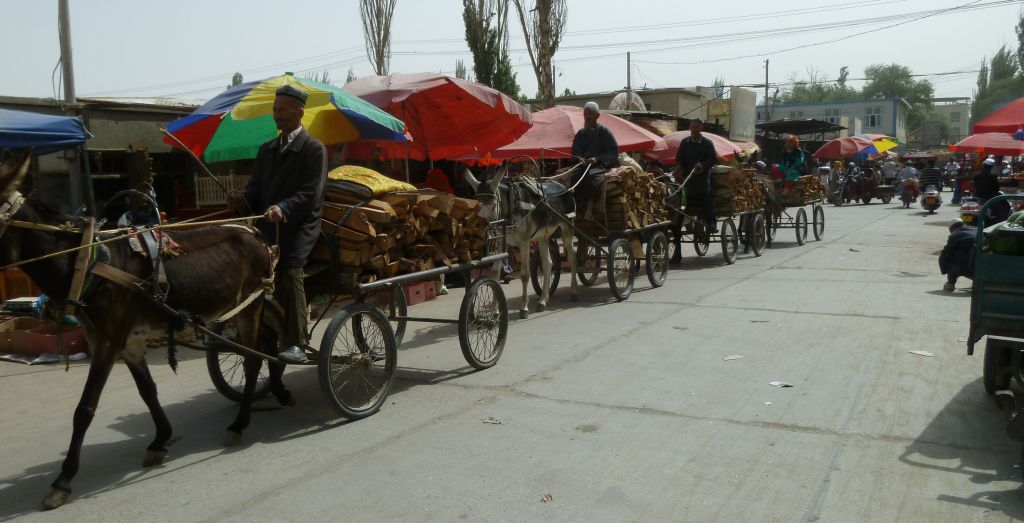
There too, and even more than in Kashgar, the women are strictly veiled – look at those behind the cart.
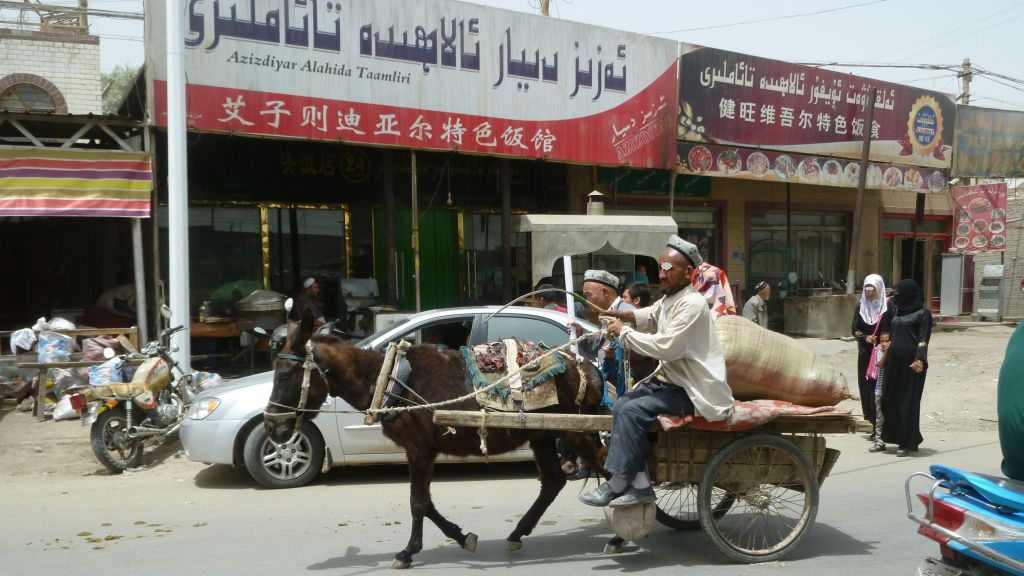
On People's Square, in the evening, the inhabitants meet, but the communities do not mingle: the Han dance, like often in the rest of China.
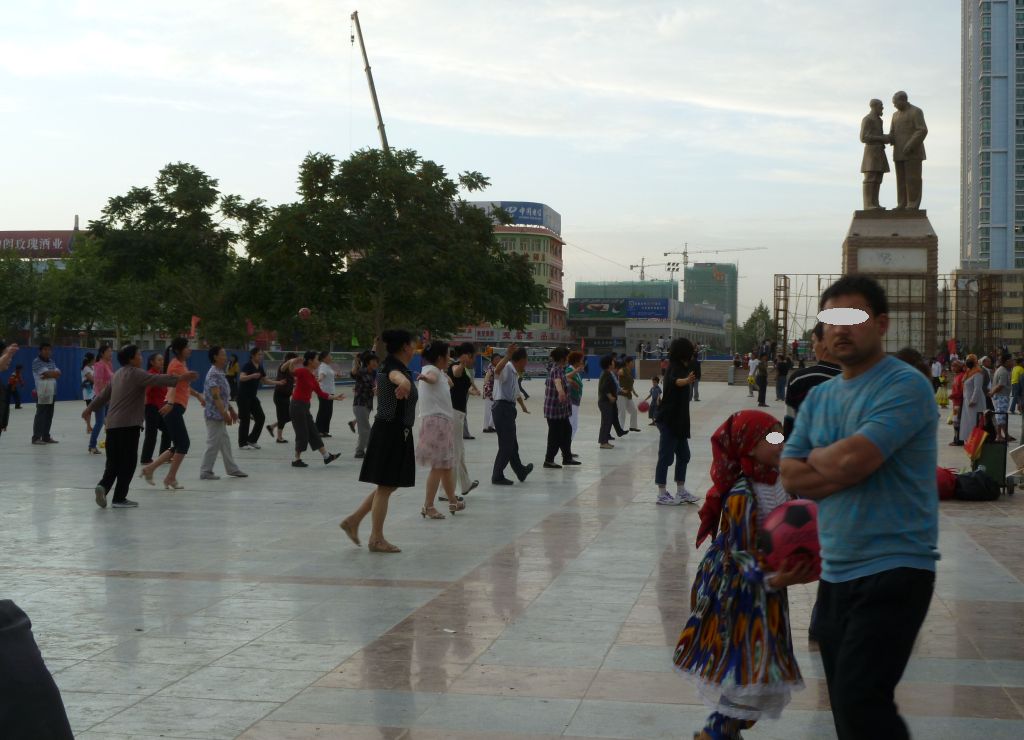
… and the Uyghurs play ball. In the background, this statue reproduces the improbable meeting of Mao Zedong and Kurban Tuluman, an old Uyghur peasant. This handshake was immortalized by a photography in the 50's and became a propaganda tool which can be seen everywhere.
This is where I faced my only linguistic barrier in this trip: a dozen nice young mens surrounded us and asked us where we were from. Amerika ? Communication was nil: they did not speak a word of Mandarin Chinese, and my attempt to draw a map of the world was a miserable failure (I am not sure they would have known Europe anyway). Since then, I learnt a single word in Uyghur: something like Frantsia is quite well understood.

To reach Urumqi from there, you have the choice between the bus (around twenty hours) and the plane. The bus throws in the added bonus of being sometimes blocked by sand storms which can engulf the only road crossing through Taklamakan desert. It is suggested to take several days of food and water, just in case.
A plane can also be grounded by the weather, but once aloft, it can detour. Nobody will be surprised to read that I chose that option, and a quarter of an hour taxi ride brings us to the airport which is located in the desert, next to the limit of the southern limit of the oasis. This is the kind of place where a square mile of land costs nothing, even though the Chinese have very efficient and cheap ways of handling expropriation and compensation.

We were two and half hours in advance (I did not want to repeat our experience of the URC-KSG flight), and there were few people in the terminal for the first flight in the afternoon at 6pm.

This second picture from the other end give you a complete overlook of the landside area of HTN.

No quite, because there is a single self-check in machine.

A miracle: you do not need to scan your passport (which often fails in China), but either read its contactless chip (top right on the machine). This is little help to the holder of a foreign passport whose chip is not compatible, but you can also type the number of your ID, which is much faster for me than for Ms Zhang whose ID had a rather long number. The menu is of course in Chinese only.
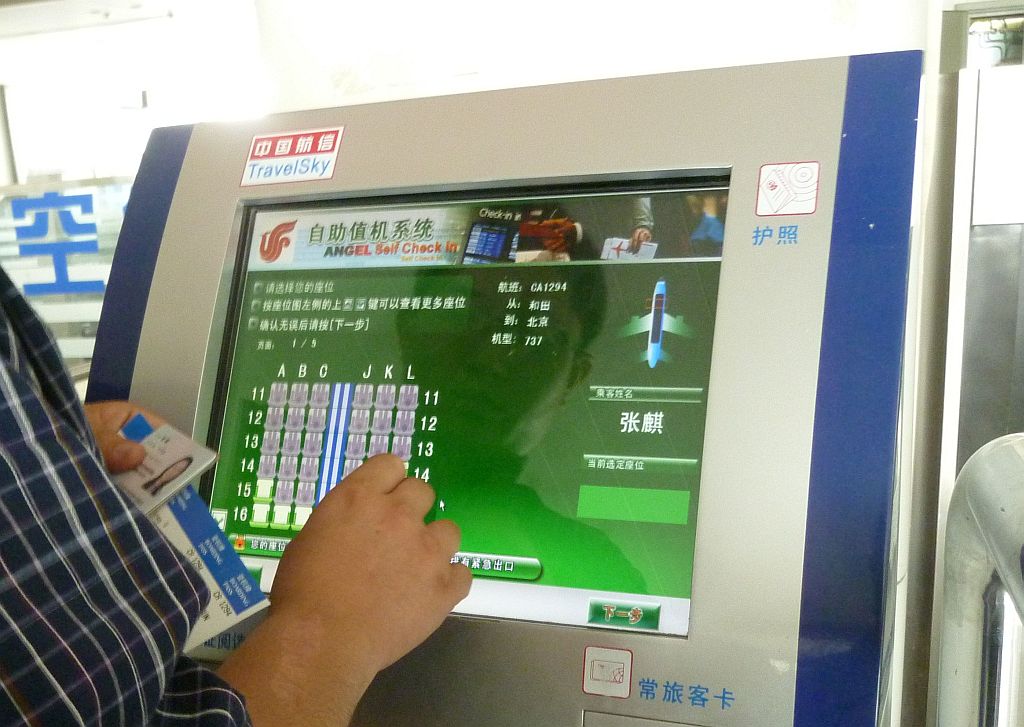
No, the software is not smart enough to identify people who travel together: no matter if you are Chinese or foreigner, you must check in each person individually, but this provides me the comfort of having a window seat well before the opening of the manual check in, in this plane which will be full.

In this area where the desert is ideal for military bases which unfortunately cause the inaccessibility of some archeological sites, with multiple borders, and a restless population, there are many military people in Xinjiang, like this youth doing his military service, who takes his MP3 reader in his small hand luggage which mostly contains military boots and clothes.

Checking in the luggage starts; it is longish because there is a limit on the weight, not the number of pieces (often heavily second hand cardboard boxes with tape and strings).

Security checks are more serious in Xinjiang than anywhere else in China, because there have been several terrorist attacks. Less than a month after this flight, on 29 June, 2012, ten minutes after the take-off, six men tried to force their way into the cockpit of the E-190 operating flight GS7554 flying the same HTN-URC route, using a broken crutch as a tool, but were overwhelmed by air marshalls and passengers. We understood in hindsight that a couple passengers on this flight who had not looked like standard passengers to my wife weren't.
So here, as opposed to anywhere else in China, you must remove your belt and shoes, and the manual check is systematic and rather lengthy. After the safety check , we reach this nondescript boarding room.

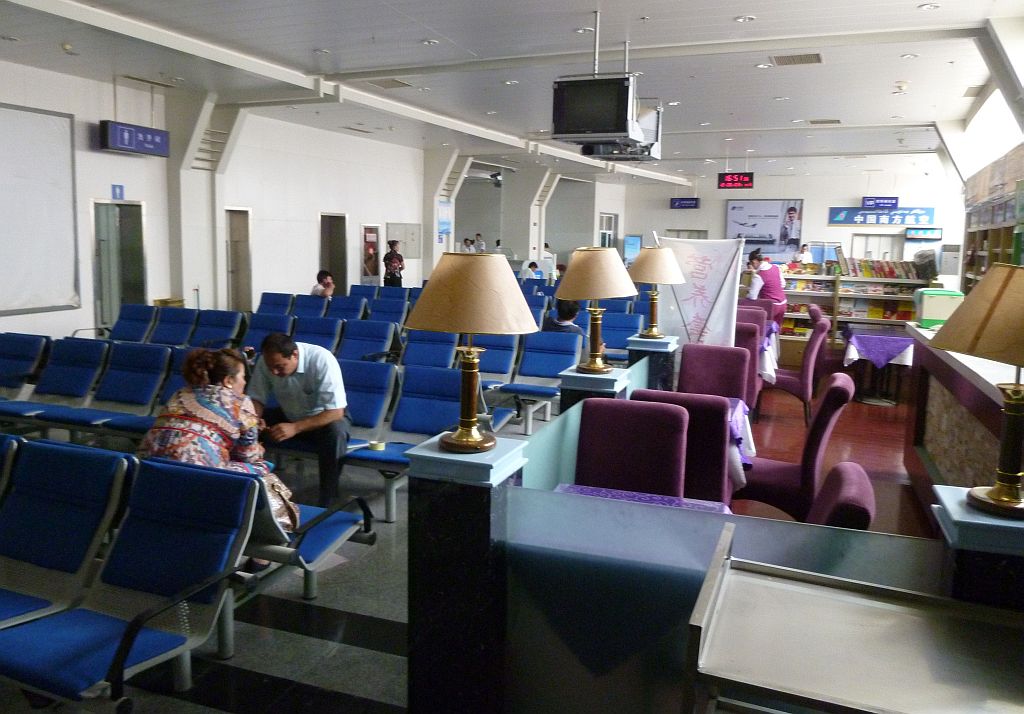
For the elite customers of China Telecom, there is this lounge, which is locked.
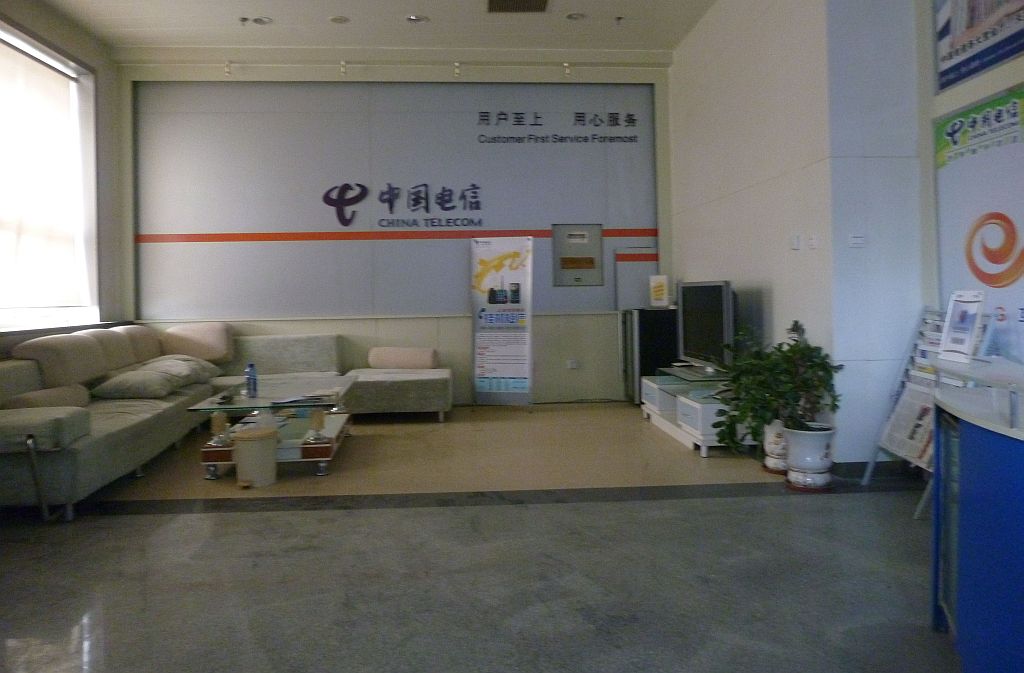
And this other lounge for business PAX.
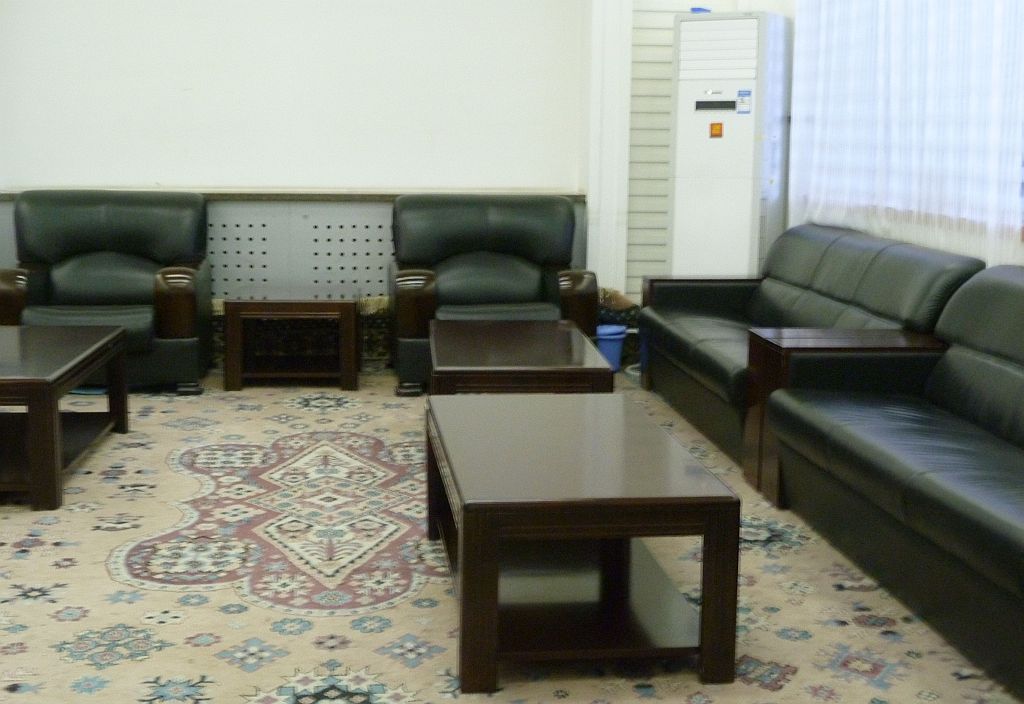
You cannot detect it on the picture, but the stench in these toilets set a trip record, just above that of the toilets located landside at URC's Terminal 2.
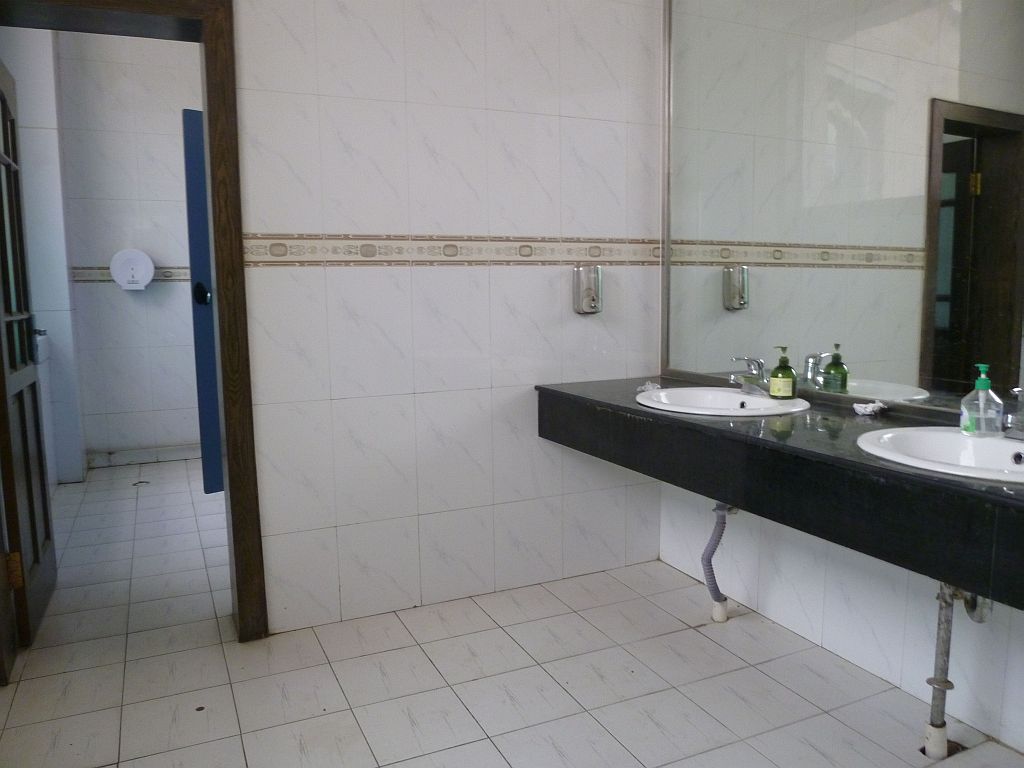
Boarding on time – there is neither jetbridge nor passenger bus…


… and this picture is the perfect illustration of my idea of an airport in a desert.





A last look at the terminal

Thanks to this flight, I learnt the existence of the Reduced Vertical Separation Minimum qualification, which is unlikely to provide a plus in the Hotan airspace, given the number of daily flights.


The passengers keep walking towards the plane (the panoramic assembly of two pictures creates light grey ghosts in the overlap area).
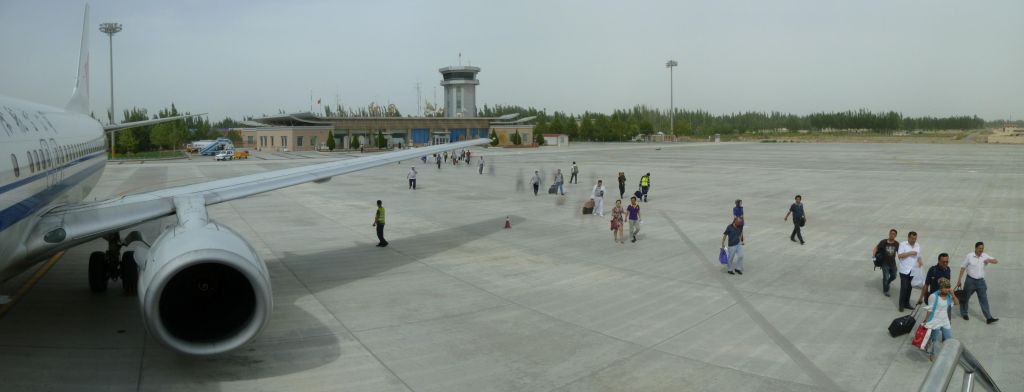

For registration number addicts which did not find legible enough, I have an official document.

As usual, two rows of J in 2+2 and the rest in 3+3.
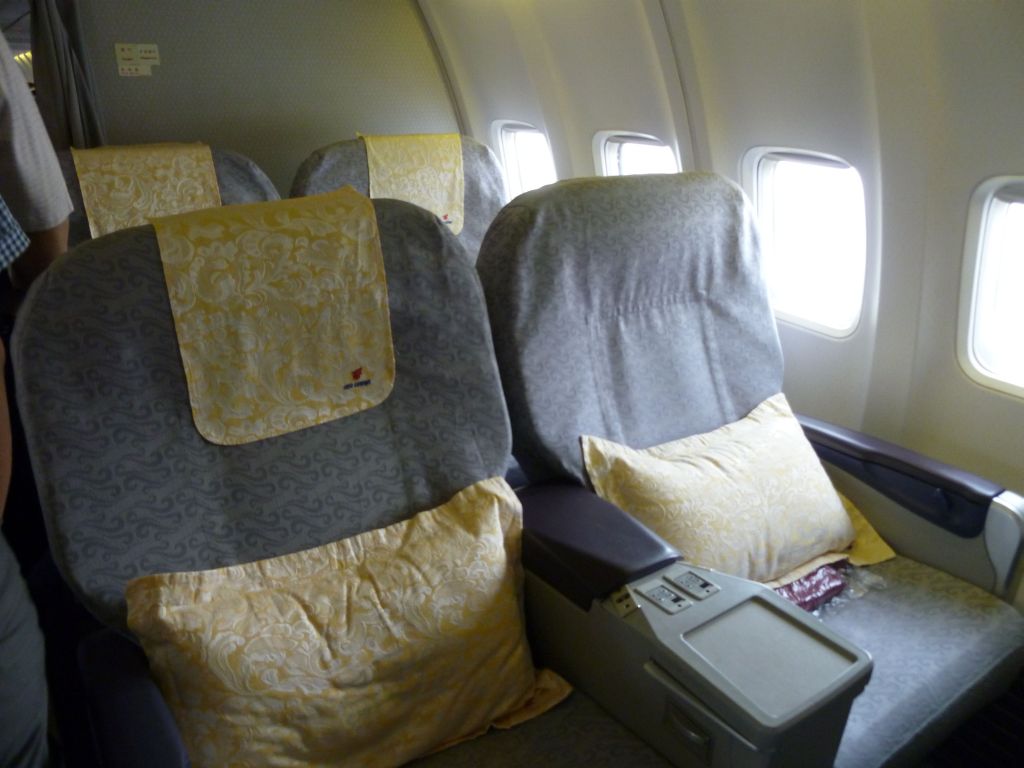
An overview of the Y cabin. Only the seats next to the emergency exits appeared to remain unoccupied.

A view of the landscape through the window which was not very clean inside, and severely scratched outside (the sand probably did not help).
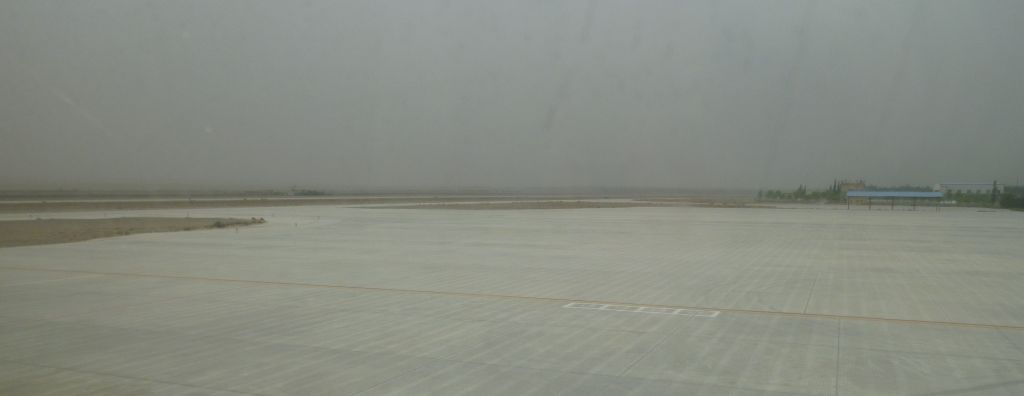
The safety card and the seat pitch.
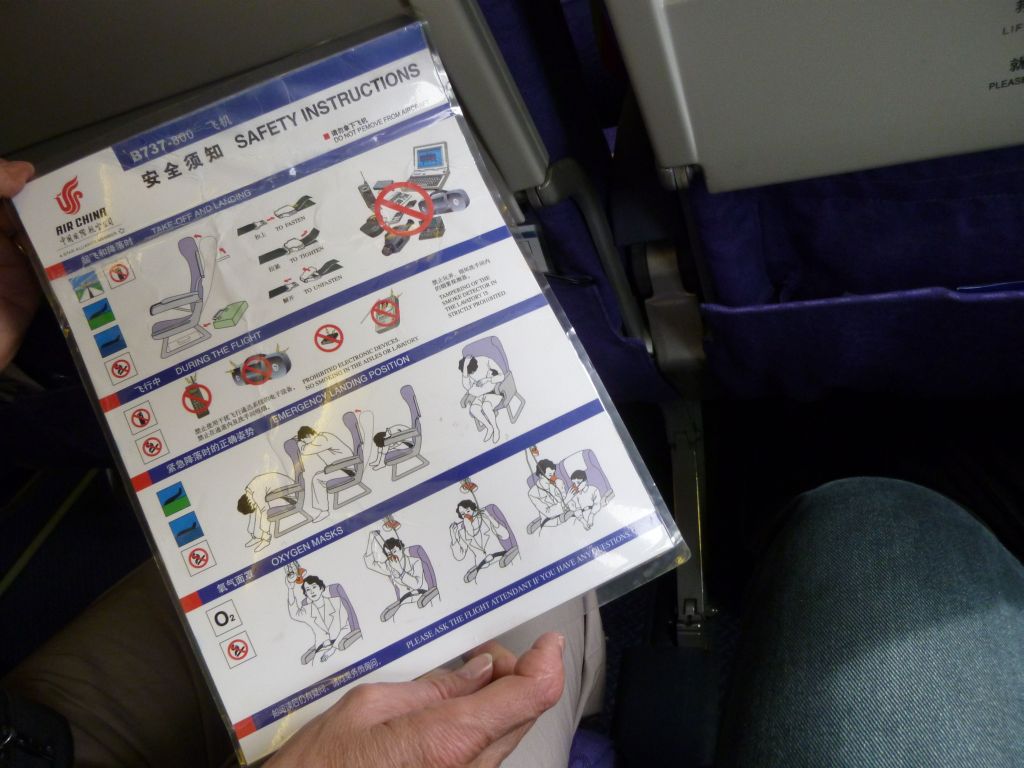

The passengers have checked little luggage and a significant volume of hand luggage: the last ones to board obviously have some difficult to find space for theirs. The steward who speaks Mandarin with a thick Beijing accent detectable ten rows away directs a passenger to put his luggage above the emergency exits where there is nobody, but it takes more optimization of the contents of the overhead bins to fit everything in them.

Only at the security check could I have seen the face of this woman: the Uyghurs are Muslims, and the more remote the town, the more numerous the strict islamic clothing of women.

Arrival of a CZ E-190 from URC.

The visibility was poor that day; there it is taxiing back on the runway.
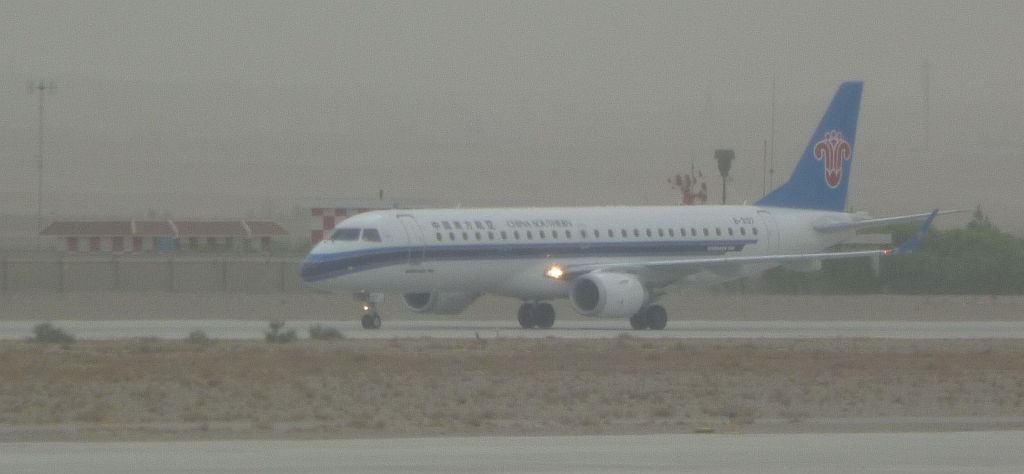
Take-off on runway 11, and therefore with a view on the oasis on the right .
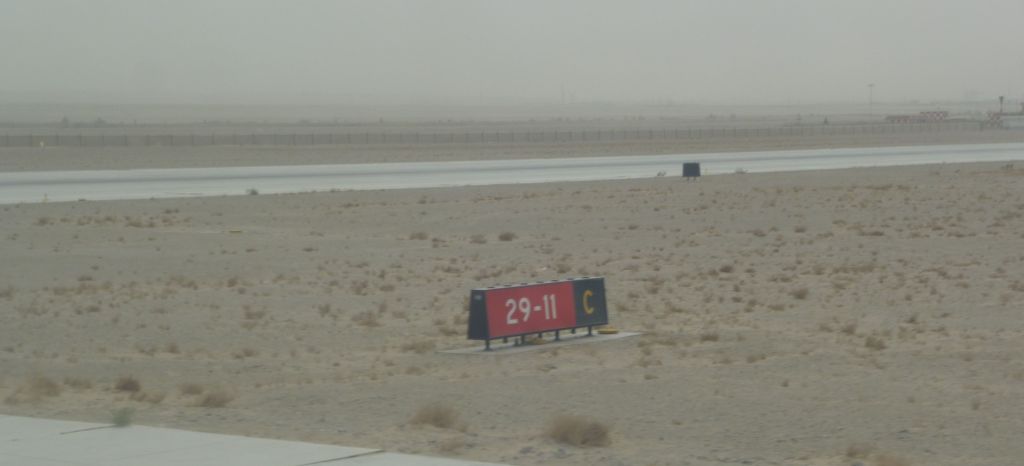
See here the control tower and the terminal, and the green of the oasis behind.

Take-off. No, this 738 does not have winglets.



Here, there is a clear limit between the oasis and the sand desert.




What does a flat sand desert look like ? Like something ochre on which the autofocus of my camera has a hard time finding anything to focus on.
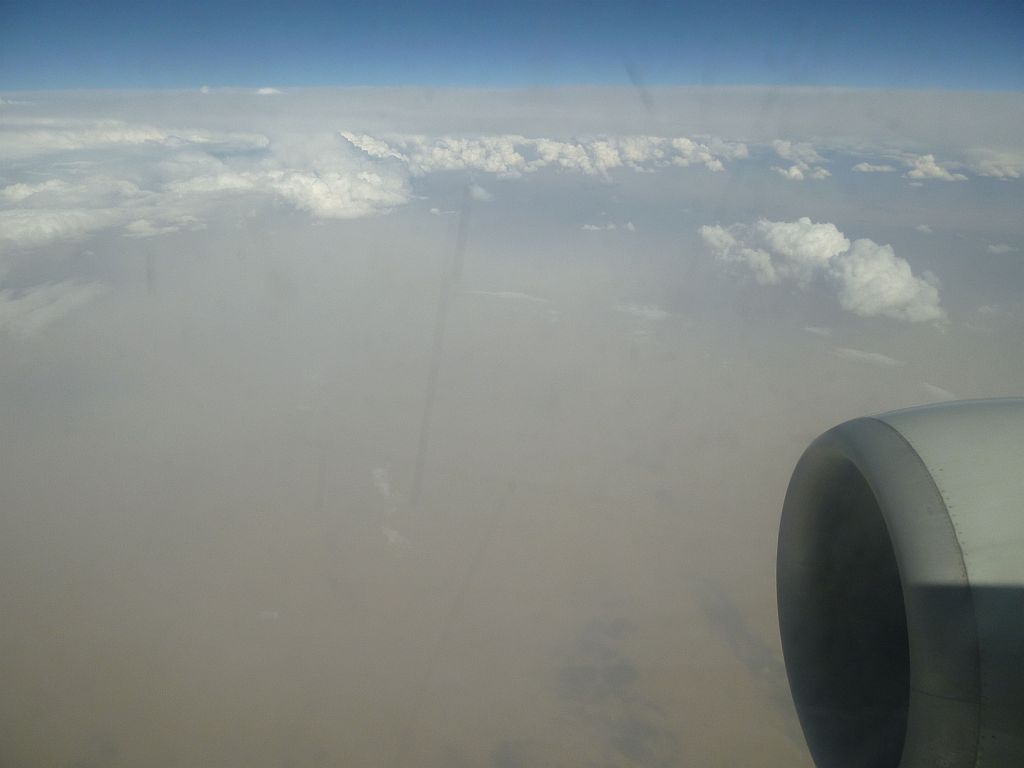
The flight attendants distribute a “light meal”, as they called in it in English.

Very light indeed: a small bread with tiny particles of undefined meat on the surface, and a drink. My wife asked for and received a glass of Pepsi-Cola (Coca-cola is very unusual on board Chinese planes) AND a glass of coffee.
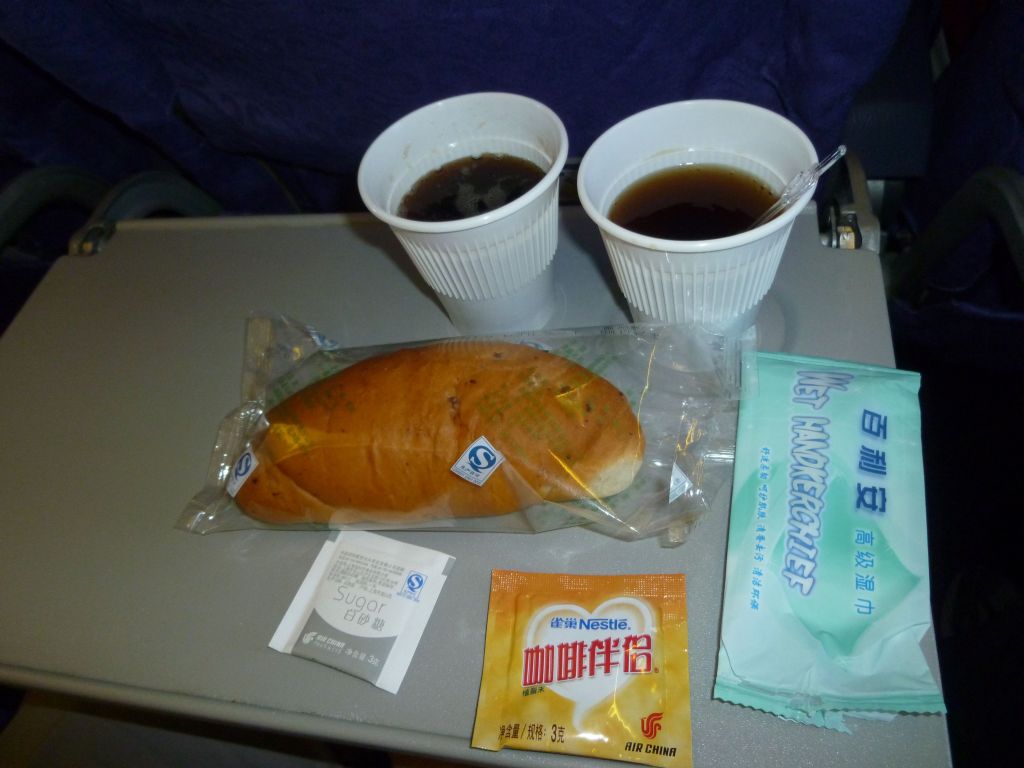
Coffee? When I saw it being poured from the coffee pot, I wondered how such a light colored could still be called coffee. After tasting it (or rather searching for its taste), I wondered if coffee in any quantity had been used to make it.

There is probably seldom water in the talweg.

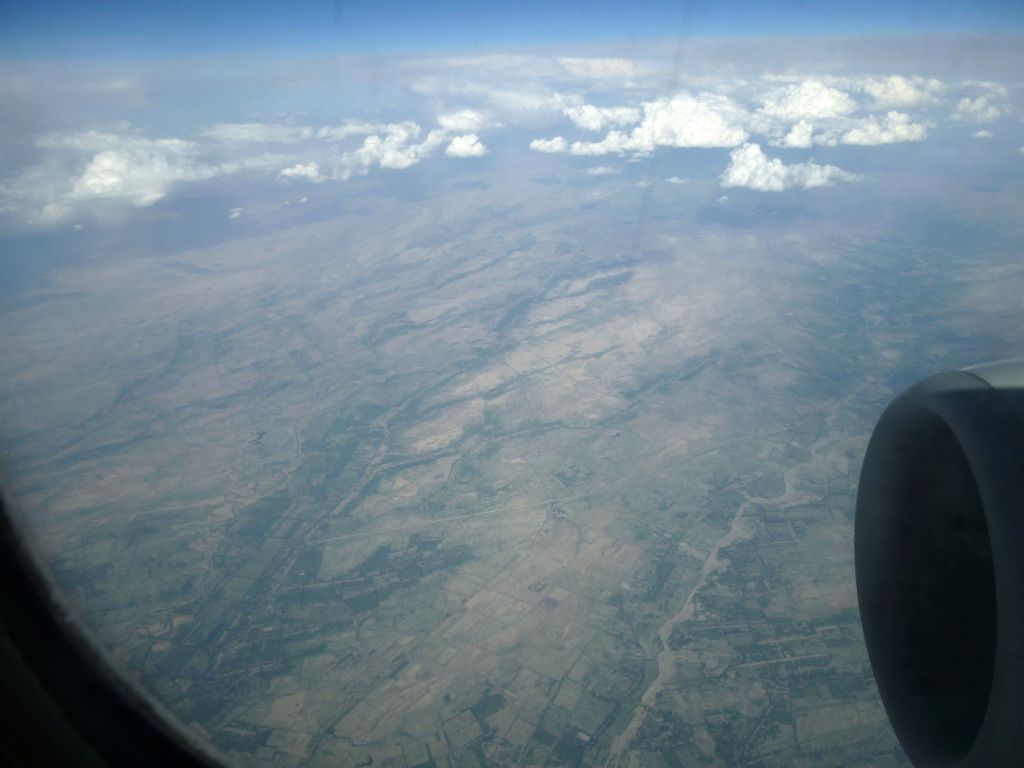
The mountains separating the north of the Taklamakan desert from the region of Urumqi are very high, and receive therefore rain which creates fertile valleys before the stream disappears, because not river flows out of Xinjiang.




Snow on the crest of the mountains bordering the Taklamakan: this water will supply the oases at the foot of the mountains, travelling sometimes underground on the way.



Start of the descent to URC. The airport is north-north-west of the city: the plane will head due east between the airport on the left and the city on the right, and then turn around to land on runway 25. This approach gives me the opportunity to give you the aerial views of Urumqi that you were all dreaming about since Flight Report was created.

These grid patterns are obviously modern



The first power stations, most likely running on oil, because Xijiang produces significant amount of oil.
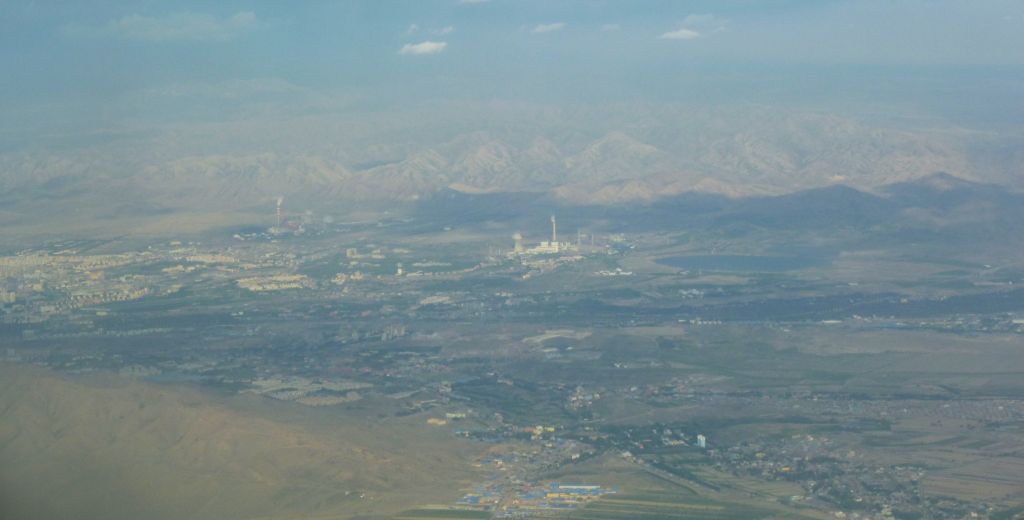
Strange geometric patterns


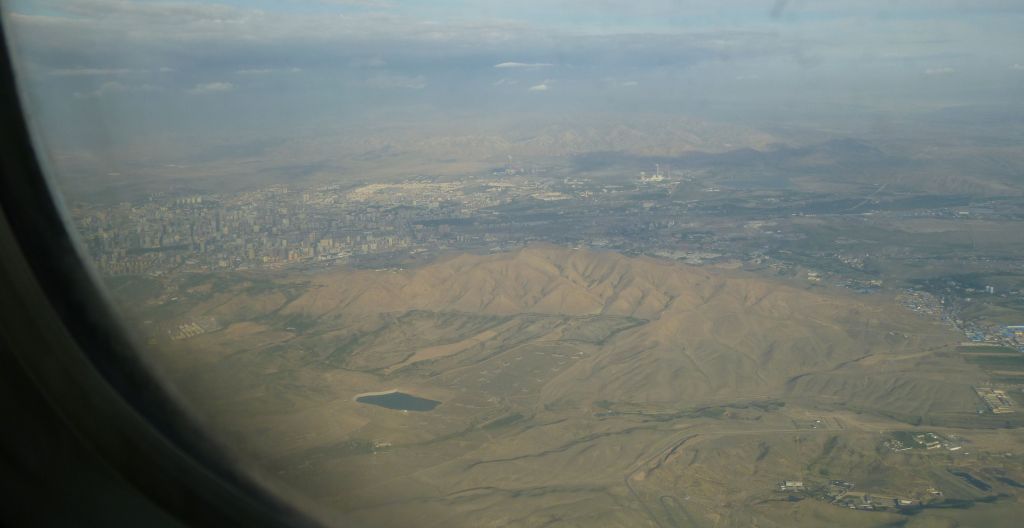
This is Urumqi, a huge nondescript Chinese city, which now has a majority of Han newcomers, making the Uyghurs a minority in the capital of their own province (or autonomous territory, in Chinese administrative parlance).


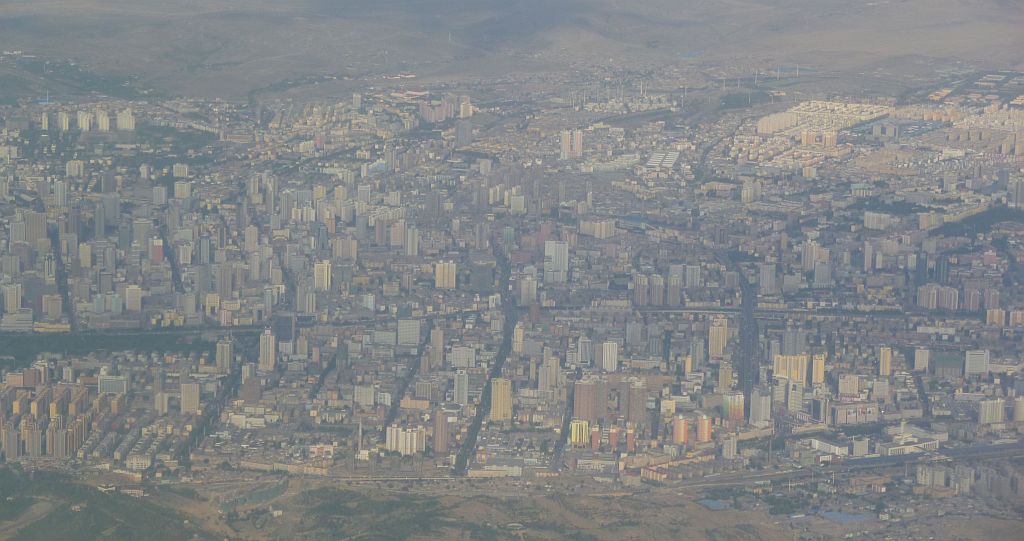

The two green areas in the center of Urumqi are the long People’s Park, and the Red Mountain Park, of elliptical shape, at the left end of the People’s Park.
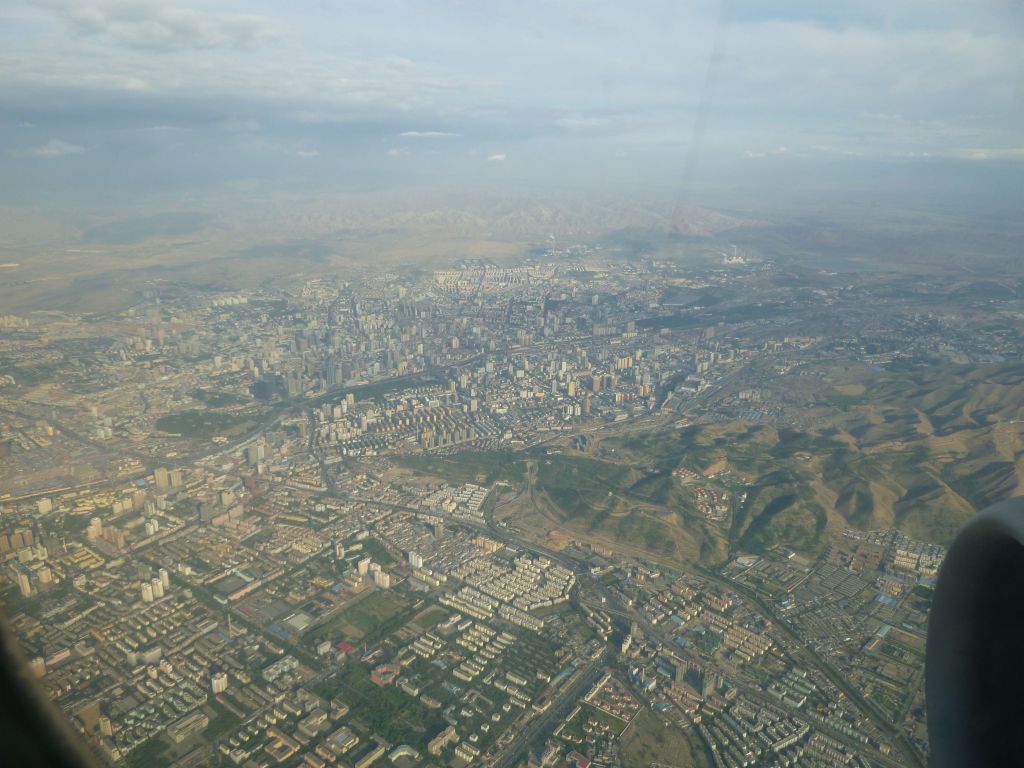


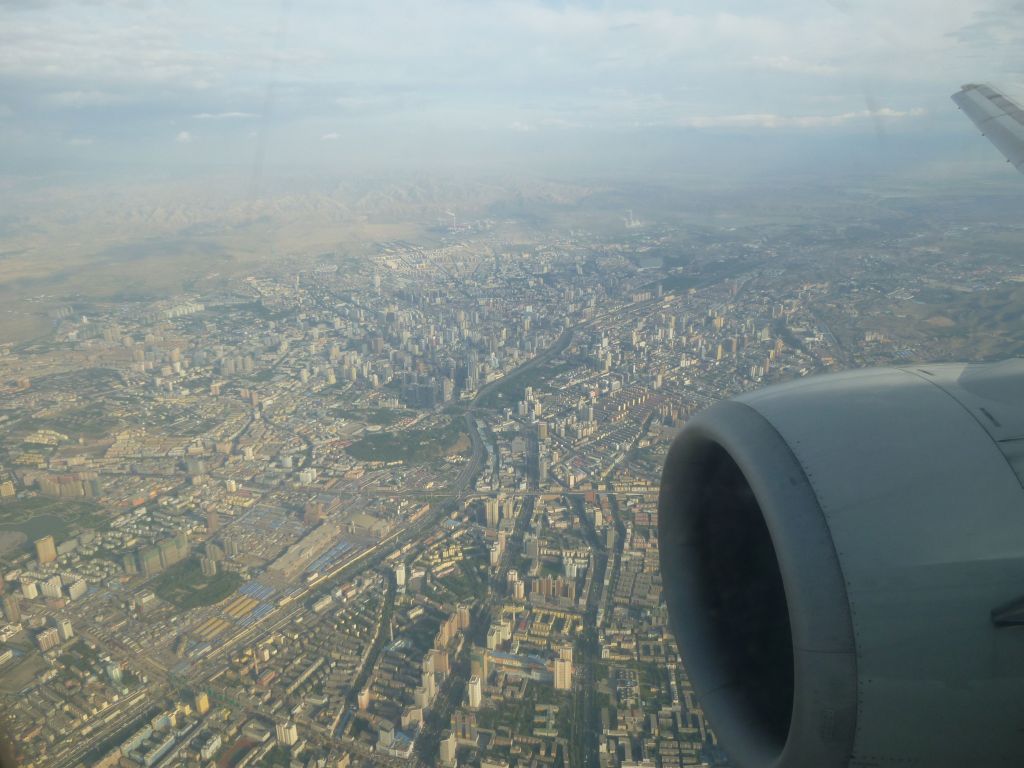

Zoom on the South Lake Place, with the Urumqi municipal museum alongside the avenue on the right.


Another power station with its typical cooling towers

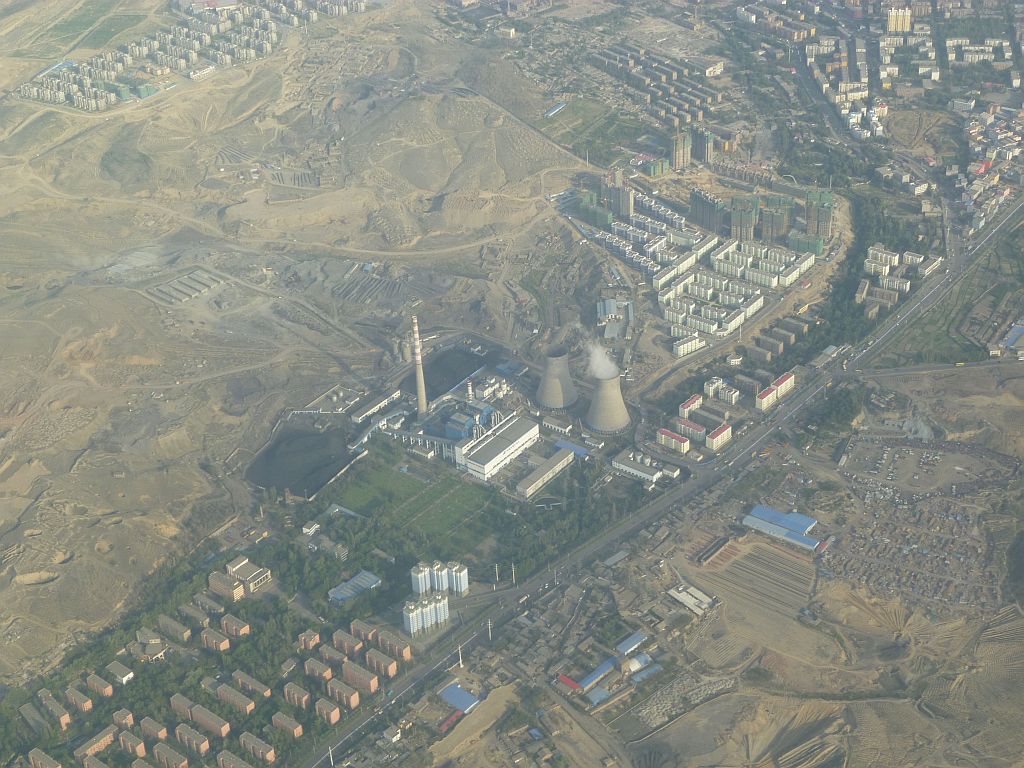
Is it really reasonable to have a golf course next to the desert?
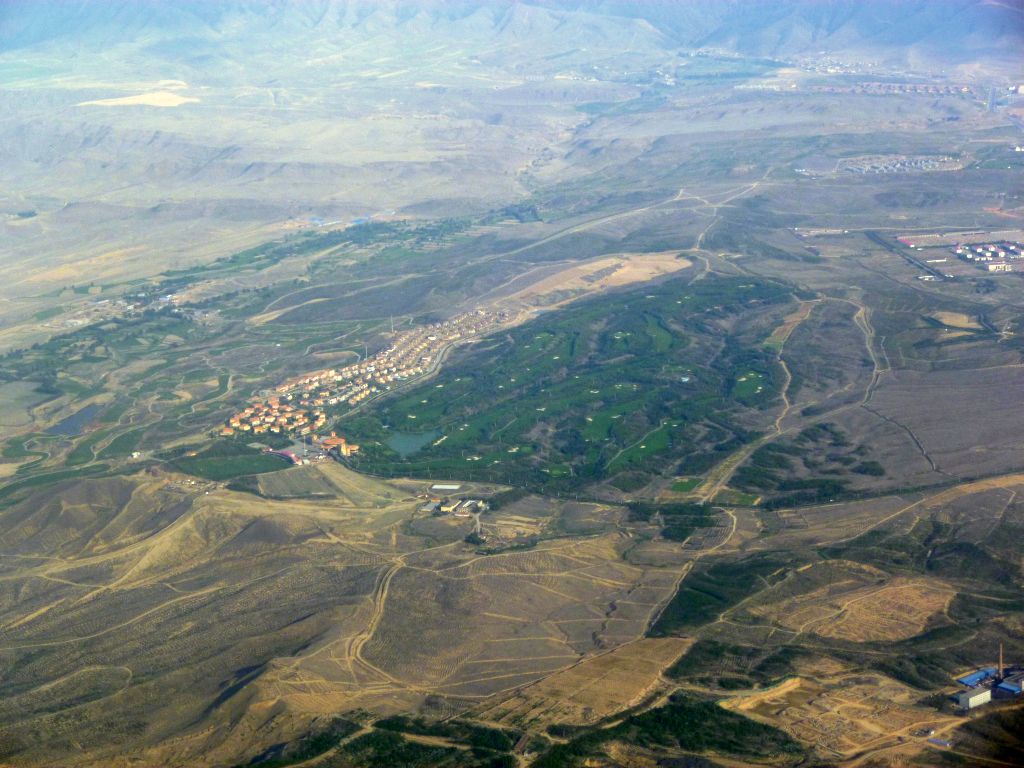
And again, just as suddenly, this is the desert.

Or rather desert mountains between which there is still water

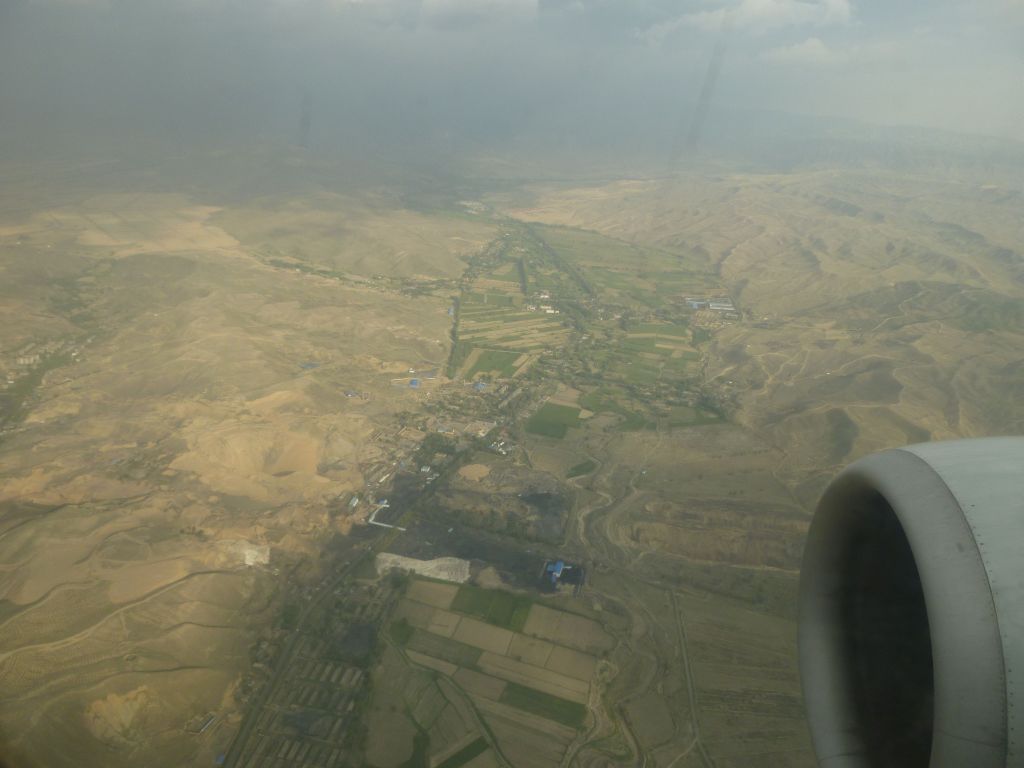
A 180° turn to perform the final descent on URC, above industrial facilities
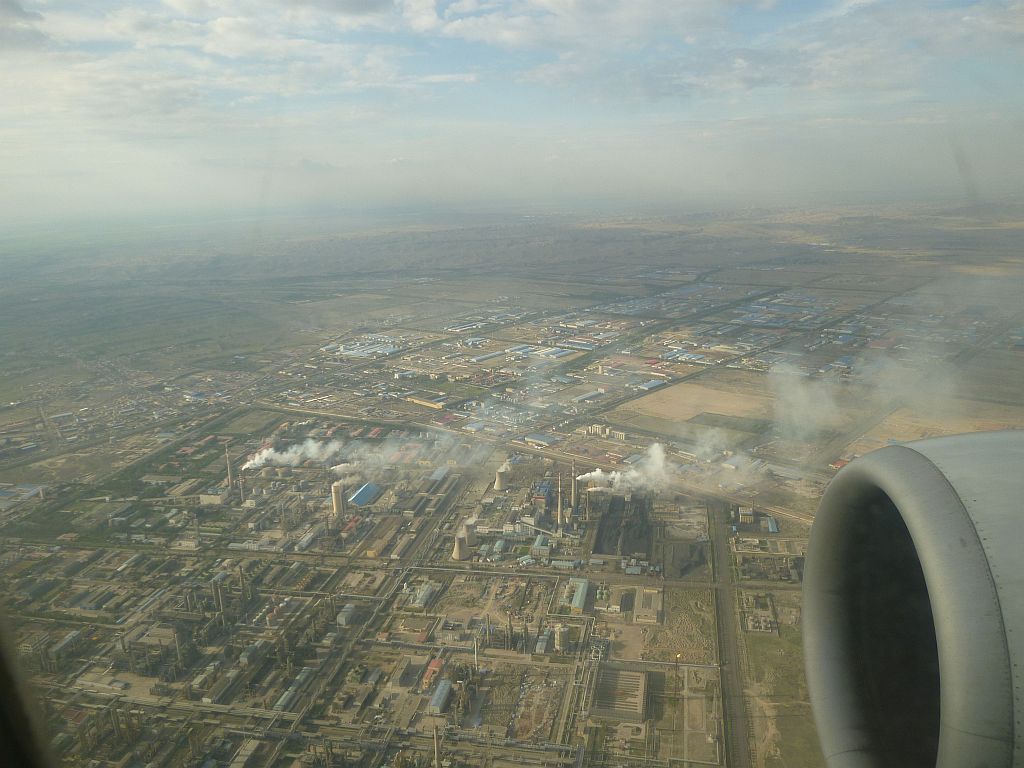
…and concrete suburban housing buildings.
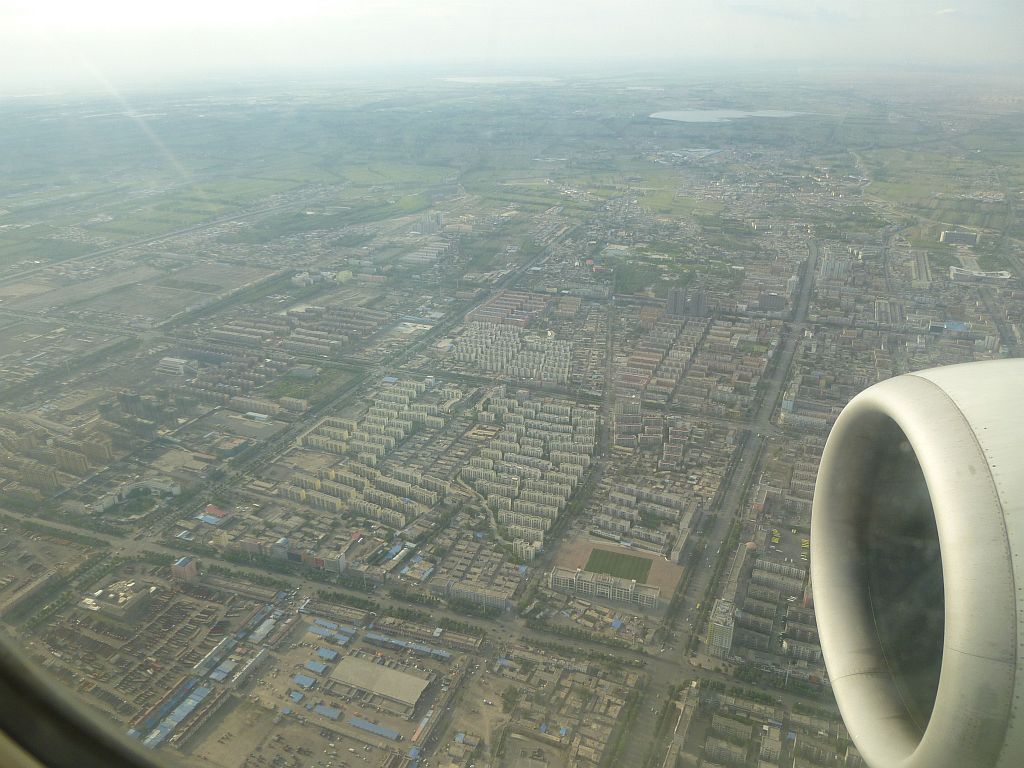
A geometric expressway interchange

What is the rigorously square infrastructure?

With its watchtowers on each side and corner, it is most certainly a prison.

Industrial buildings alongside an expressway, always with the same blue corrugated steel roofs.

Touchdown and thrust reversal

Two Tianjin Airlines E-190s


And two Grand China Express E-145s


A Shandong Airlines738

A China United 737, possibly registered B-4108 (thanks to Baptistelaviateur), and the Follow me car in the foreground.

Another Tianjin Airlines aircraft, with a different tail decoration
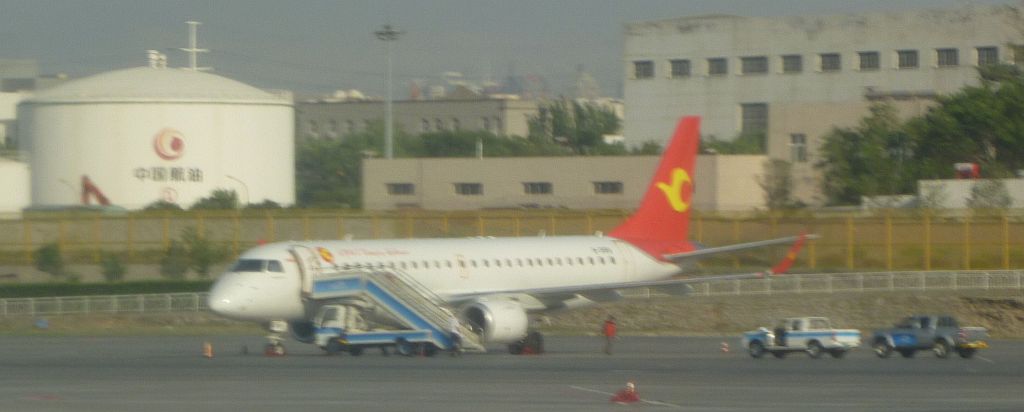
The Shandong Airlines 738 taxis to the runway.
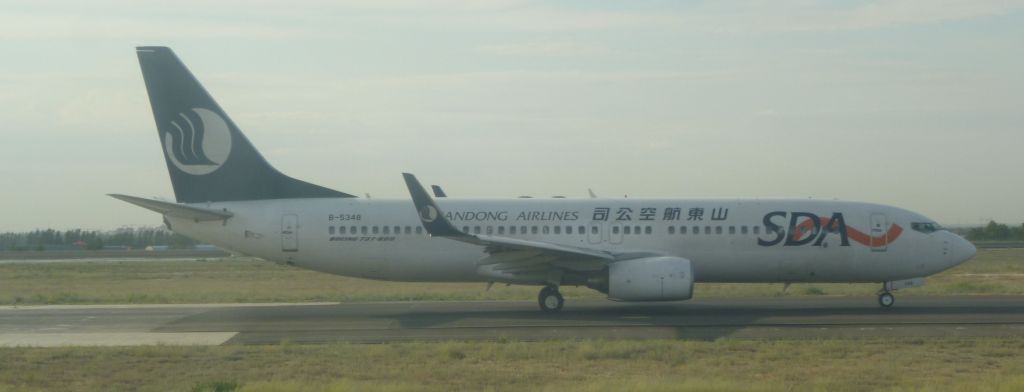
A Sprint Airlines A320 (a low cost airline based in Shanghai)
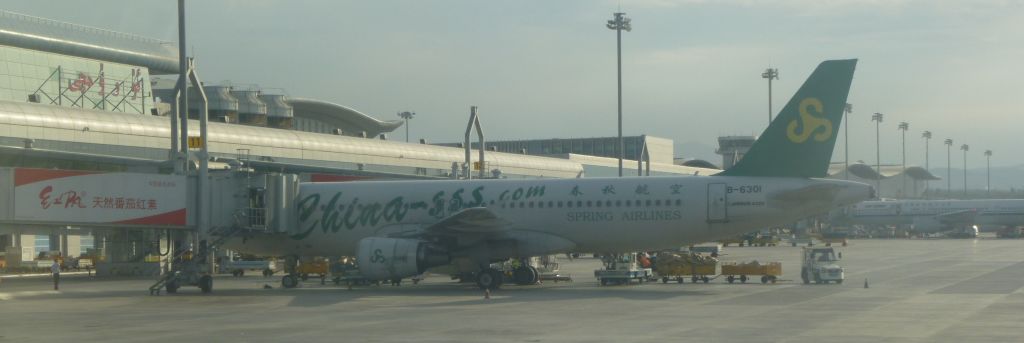
OK, there was a serious contre-jour in the previous picture. Better recognize it and use the lighting as it is for this picture of a flotilla of parked Embraer.

This Hainan Airlines 738 is correctly lit.

Arrival of flight KN2273 from Beijing Nanyuan

Like anywhere else in Mainland China, the advertising on jetbriges is not by HSBC.

Luggage delivery was not very quick by Chinese standards, but ours were among the first ones. I did not need to mask the face of this passenger, neither here….

Nor there in the line for the taxis outside.




